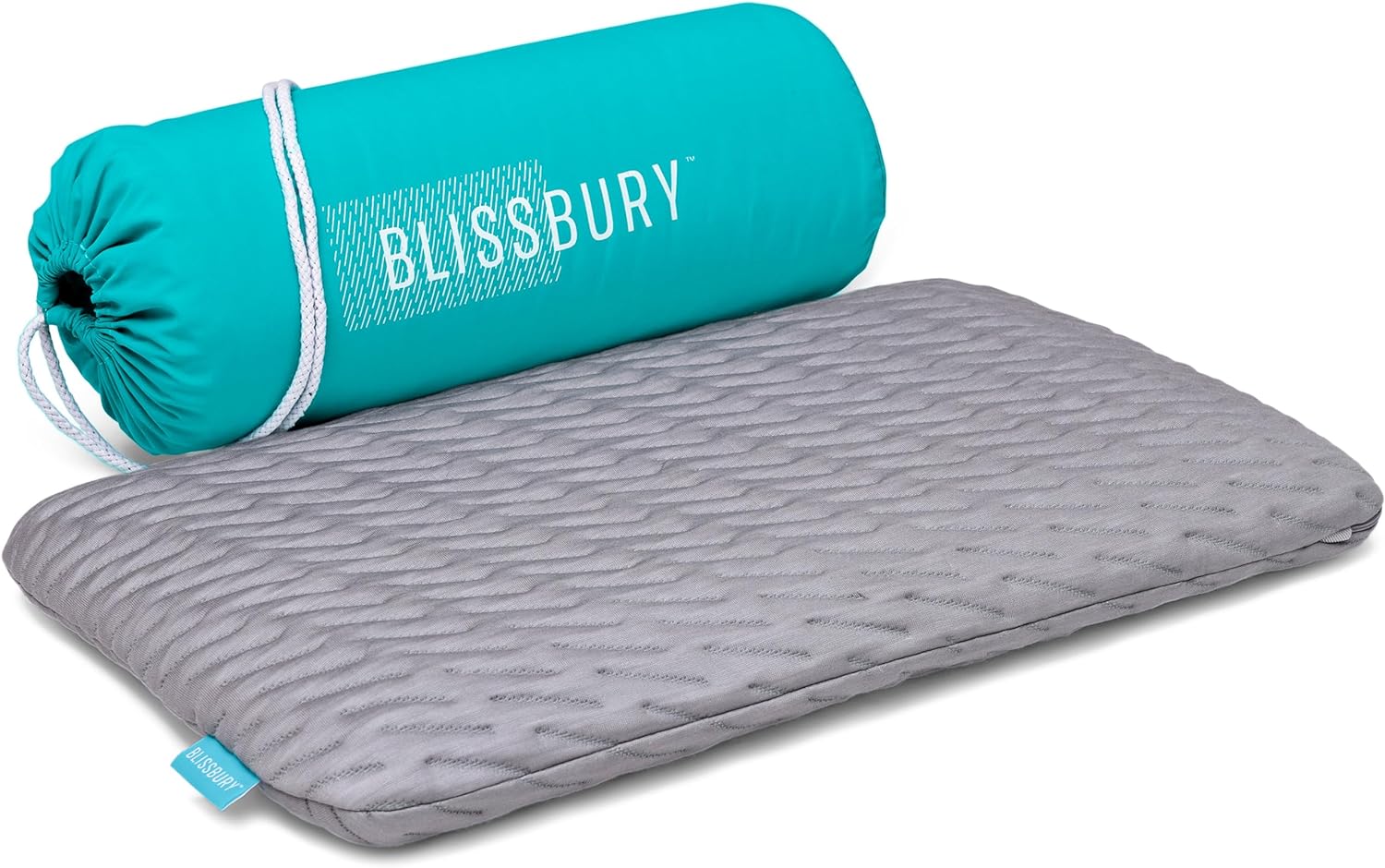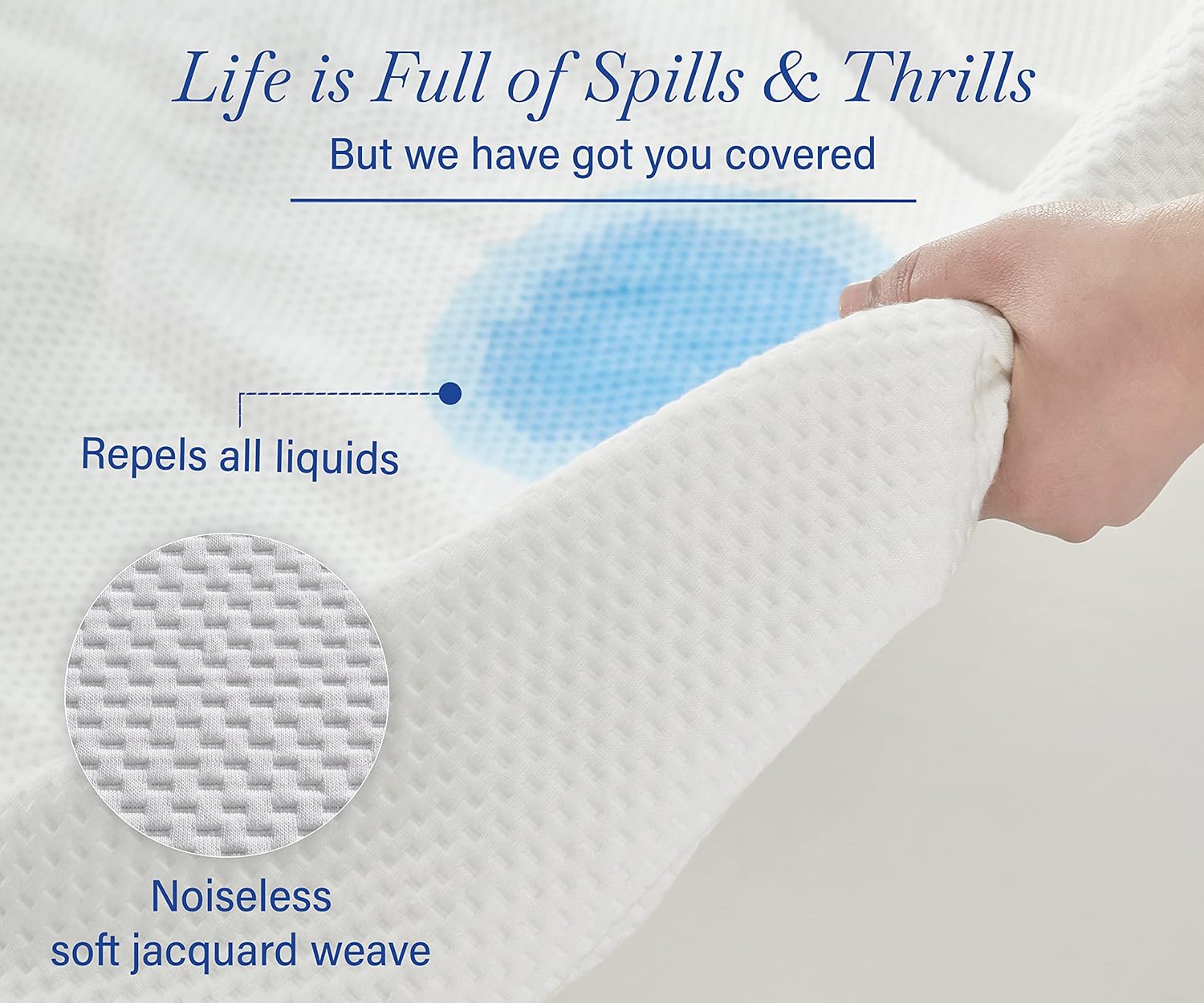Have you ever wondered how to achieve better alignment while sleeping on a memory foam pillow? In this article, we will explore the simple yet effective techniques to bend and shape your memory foam pillow, allowing you to customize its support and contour to your specific needs. By understanding the proper way to manipulate your pillow, you can enhance your sleep quality and wake up feeling refreshed and revitalized. Get ready to discover the secrets of bending and shaping memory foam pillows for optimal alignment!
Review contents
Choosing the Right Memory Foam Pillow
Consider your sleeping position
When choosing a memory foam pillow, it is essential to consider your preferred sleeping position. Different sleeping positions require different levels of support to maintain proper alignment and reduce any discomfort. For example, back sleepers may benefit from a pillow that provides adequate support for the neck and lower back, while side sleepers may require a pillow that fills in the gap between the head and shoulder. By considering your sleeping position, you can select a memory foam pillow that caters to your specific needs.
Evaluate the pillow’s firmness
The firmness of a memory foam pillow plays a significant role in providing optimal comfort and support. The level of firmness you choose will depend on your personal preference and the amount of support your head and neck require. Some individuals find a firmer memory foam pillow more comfortable, while others prefer a softer one. It is important to try different firmness options and determine what works best for you in terms of both comfort and support.
Check the loft of the pillow
The loft of a memory foam pillow refers to its height or thickness. A higher loft pillow is generally better suited for individuals who prefer sleeping on their side, as it helps maintain proper alignment and fills the gap between the head and the shoulder. On the other hand, back and stomach sleepers may find a lower loft pillow more suitable. It is crucial to consider the loft of the pillow and ensure it aligns with your sleeping position to promote optimal comfort and support.
Look for adjustable options
Some memory foam pillows offer adjustable features that allow you to customize the height, firmness, or shape of the pillow to meet your specific needs. This can be particularly beneficial if your sleeping position changes throughout the night or if you have specific areas that require additional support. Adjustable memory foam pillows often come with removable or interchangeable inserts, allowing you to modify the pillow to your desired comfort level. Considering adjustable options can provide you with greater flexibility and ensure you find the perfect pillow for your needs.
Understanding Memory Foam Pillows
Know the benefits of memory foam
Memory foam pillows have gained popularity due to their numerous benefits. One of the main advantages of memory foam is its ability to contour to the shape of your head, neck, and shoulders, providing personalized support and promoting proper alignment. Additionally, memory foam pillows are known for their pressure-relieving properties, which can reduce the occurrence of common sleep disruptions such as tossing and turning. The material’s ability to absorb movement also makes memory foam pillows an excellent choice for couples, as it minimizes disturbances caused by their partner’s movements during sleep.
This image is property of www.memoryfoamwarehouse.co.uk.
Understand the different types of memory foam
Not all memory foam pillows are created equal, as there are several different types available in the market. Traditional memory foam is the most common type and is known for its ability to conform to the body’s contours. Gel-infused memory foam incorporates cooling gel particles, which help regulate temperature and prevent overheating during sleep. Shredded memory foam pillows contain small pieces of memory foam and provide a more adjustable and moldable option. It is essential to understand the different types of memory foam and their features to choose the one that suits your preferences and needs.
Consider size and dimensions
Memory foam pillows come in various sizes and dimensions to accommodate different sleepers’ needs. Standard size pillows are typically around 20×26 inches, while queen and king sizes provide additional length and width. Body pillows offer full-body support and are especially beneficial for pregnant women or individuals recovering from injuries. It is crucial to consider the size and dimensions of the memory foam pillow to ensure it fits your bed and provides adequate support for your body.
Recognize the importance of alignment
Proper spinal alignment is crucial for a comfortable and restful sleep experience. Memory foam pillows are designed to support the natural curvature of the spine, ensuring that your head, neck, and shoulders are aligned in a neutral position. The alignment provided by a memory foam pillow can help alleviate neck and back pain, reduce the risk of developing sleep-related disorders, and promote overall sleep quality. Recognizing the importance of alignment will guide you in selecting a memory foam pillow that supports your body properly.
Preparing Your Memory Foam Pillow
Remove the pillow from packaging
When you first receive your memory foam pillow, it is essential to remove it from its packaging promptly. Carefully cut open the packaging, ensuring not to damage the pillow. Removing the pillow from its packaging allows it to start expanding and getting back to its original shape.
Give the pillow time to expand
Memory foam pillows may be compressed for shipping purposes, so it is crucial to give them time to expand fully. Once removed from the packaging, place the pillow on a flat surface and allow it to expand for at least 24 hours. During this time, the memory foam will regain its intended shape and dimensions, ensuring optimal comfort and support when used.
This image is property of qph.cf2.quoracdn.net.
Allow the pillow to air out
New memory foam pillows may have a slight odor due to the manufacturing process. To alleviate any smell, it is recommended to allow the pillow to air out in a well-ventilated area for a few hours or even overnight. This will help dissipate any initial odor and ensure a fresh and pleasant sleeping environment.
Consider a pillow protector
To protect your memory foam pillow from stains, dust, and allergens, consider investing in a pillow protector. A pillow protector acts as an additional barrier, prolonging the lifespan of your memory foam pillow and keeping it clean and hygienic. Look for a pillow protector that is breathable, hypoallergenic, and easy to clean for maximum comfort and convenience.
Bending Techniques for Better Alignment
Apply gentle pressure to mold the pillow
To enhance the alignment and comfort of your memory foam pillow, you can apply gentle pressure to mold it to your desired shape. Use your hands to exert light pressure on the pillow and encourage it to conform to your specific contours. This technique allows for a customized fit that targets your specific comfort needs.
Use your hands to shape the pillow
Another bending technique involves using your hands to shape the memory foam pillow. By pressing and molding the pillow with your hands, you can create curves, angles, or support zones that provide optimal alignment for your head, neck, and shoulders. Experiment with different hand movements and positions to find the most comfortable and supportive shape for your unique needs.
Roll the pillow for added support
Rolling the memory foam pillow can provide additional support and customization. Roll the pillow tightly, starting from one end to the other, to create a cylindrical shape. This rolled shape can be used to provide extra support under the neck or lower back, depending on your sleeping position and comfort preferences.
This image is property of Amazon.com.
Target specific areas for customized alignment
If you have specific areas that require more support or alignment, you can target those areas by bending or shaping the memory foam pillow accordingly. For example, if you frequently experience neck pain, you can create a cervical roll by folding or rolling a portion of the pillow to provide targeted support to your neck. Experiment with different bending techniques to find the perfect alignment for your specific needs.
Warming Up the Memory Foam Pillow
Use body heat to soften the pillow
Memory foam can be temperature-sensitive, meaning it becomes softer and more pliable when exposed to body heat. To warm up your memory foam pillow, simply place it on your bed and allow your body heat to soften the material. This will make the pillow more malleable and easier to shape to your desired alignment.
Massage the pillow to break up stiffness
If your memory foam pillow feels stiff or rigid, you can gently massage it to help break up any stiffness in the material. Use your hands to knead and press on the pillow, applying gentle force to encourage the foam to loosen up. This technique can help make the pillow more responsive and comfortable for better alignment.
Apply warmth with a heating pad or warm towel
If you prefer a warmer surface to rest your head on, you can apply warmth to the memory foam pillow using a heating pad or a warm towel. Place the heating pad or towel on top of the pillow for a few minutes before use. The heat will help soften the memory foam, making it easier to shape and mold for optimal alignment.
Consider using a hairdryer on a low setting
For more targeted warmth, you can use a hairdryer on a low setting to warm up the memory foam pillow. Hold the hairdryer a few inches away from the pillow’s surface and move it around gently to distribute heat evenly. Be cautious not to expose the pillow to excessive heat, as this can damage the memory foam. Using a hairdryer can provide quick and localized warmth to make shaping the pillow easier.
Molding the Pillow for Neck Support
This image is property of Amazon.com.
Determine the desired level of support
Before molding the memory foam pillow for neck support, it is essential to determine the level of support you need. Consider any neck pain or discomfort you experience and think about the position that provides the most relief. Based on this assessment, you can then proceed to mold the pillow to create the desired level of support for your neck.
Fold the pillow to create a supportive curve
To mold the memory foam pillow into a supportive curve for your neck, fold the pillow in half and shape it into a U-shape or V-shape. This folded shape will align with the natural curve of your neck, providing the necessary support and promoting proper spinal alignment. Experiment with different folding techniques until you find the curve that feels most comfortable for your neck.
Mold the pillow into a cervical roll
If you experience specific neck pain or tension, you can mold the memory foam pillow into a cervical roll. This involves rolling a portion of the pillow to create a cylindrical shape that supports the curve of your neck. Place the cervical roll under your neck while lying down, ensuring it fits snugly and provides adequate support. Adjust the thickness of the roll to find the most comfortable and supportive position for your neck.
Experiment with different positions
Every individual’s neck support needs are unique, so it is important to experiment with different positions when molding the memory foam pillow. By trying different techniques, such as folding, rolling, or shaping the pillow, you can find the position that alleviates any neck discomfort and provides the optimal support for your neck alignment.
Shaping the Pillow for Back Sleepers
Flatten the pillow for lower back alignment
When shaping the memory foam pillow for back sleepers, it is important to focus on maintaining proper lower back alignment. To achieve this, flatten the pillow to a suitable level that supports the natural curve of your lower back. The pillow should fill the gap between your lower back and the bed, providing support and alignment throughout the night.
This image is property of Amazon.com.
Create a slight elevation under the neck
Back sleepers may also benefit from a slight elevation under the neck to maintain proper alignment and prevent any strain. To achieve this, gently fold or roll a portion of the memory foam pillow to create a small support under your neck. This elevation should be comfortable and subtle, ensuring your head and neck are aligned with the rest of your spine.
Consider using a thin pillow or removing some foam
Some back sleepers may find that a thin pillow or removing some memory foam from their pillow improves their alignment and comfort. A thin pillow allows for a more natural and neutral spine position while ensuring adequate support for the neck and head. If your memory foam pillow is too thick for your preference, you can carefully remove some foam to adjust the loft and create a more suitable alignment.
Strategically contour the pillow to fit your body
Back sleepers can also strategically contour the memory foam pillow to fit their body shape and needs. This can involve shaping the pillow to accommodate any curves or contours in the back, upper body, or shoulders. By customizing the shape of the pillow to fit your unique body, you can ensure optimal support, alignment, and comfort as a back sleeper.
Forming the Pillow for Side Sleepers
Fill in the gap between the head and shoulder
Side sleepers often experience a gap between their head and shoulder, which can lead to discomfort and strain. To address this, side sleepers can shape the memory foam pillow to fill in the gap and maintain proper alignment. By creating a supportive shape that fits snugly between the head and shoulder, side sleepers can ensure the spine remains straight and aligned throughout the night.
Align the spine with a fuller portion of the pillow
To achieve optimal spinal alignment as a side sleeper, it is important to align the spine with a fuller portion of the memory foam pillow. This can be done by positioning the pillow in a way that provides the necessary support and fills in any gaps or spaces. By aligning the spine with a fuller portion of the pillow, side sleepers can reduce pressure points and promote better alignment.
Fold the pillow for additional height and support
If additional height or support is desired as a side sleeper, folding the memory foam pillow can provide the necessary elevation. By folding the pillow in half or creating specific folds, side sleepers can customize the pillow’s shape to elevate their head or support their neck, resulting in improved alignment and reduced strain.
Ensure the pillow fills the space from neck to shoulder
To maintain proper alignment and support as a side sleeper, it is crucial to ensure the memory foam pillow fills the space from the neck to the shoulder. This ensures that the spine remains straight and the head is supported in a neutral position. Ensure the pillow is thick enough to support your head while allowing the neck to align with the rest of the spine for optimal comfort and alignment.
Adjusting the Pillow for Stomach Sleepers
Choose a low-loft pillow to avoid strain
Stomach sleepers often require a low-loft pillow to avoid strain on the neck and spine. A low-loft pillow ensures that the head and neck remain in a neutral position, minimizing the risk of discomfort or misalignment. When selecting a memory foam pillow as a stomach sleeper, opt for a thinner option that provides the necessary support without compromising on proper alignment.
Flatten the pillow to maintain a neutral spine position
To achieve a neutral spine position as a stomach sleeper, it is important to flatten the memory foam pillow. Place the pillow under your head and gently flatten it to ensure your head and neck are in alignment with the rest of your spine. This will help alleviate any strain on the neck and promote a comfortable and restful sleep.
Consider placing a thin pillow under the pelvis
To further support proper alignment for stomach sleepers, placing a thin pillow under the pelvis can be beneficial. This slight elevation helps maintain a neutral spine position and prevents excessive arching of the lower back. Experiment with different pillow thicknesses until you find the most comfortable and supportive position for your pelvis.
Experiment with different pillow sizes and thicknesses
As a stomach sleeper, it may take some trial and error to find the ideal memory foam pillow size and thickness for your needs. Experiment with different options, such as thinner pillows or smaller sizes, until you find the combination that provides the best support and comfort. Remember to prioritize maintaining a neutral spine position to prevent any strain or discomfort.
Seeking Professional Assistance
Consult a chiropractor or physical therapist
If you are struggling to find the right memory foam pillow or experiencing persistent discomfort, it may be beneficial to consult a chiropractor or physical therapist. These professionals specialize in spinal alignment and can provide personalized recommendations based on your specific needs and preferences. They can assess your individual situation, evaluate your sleeping position, and suggest the most suitable memory foam pillow or other alignment aids.
Consider a specialized pillow fitting service
For individuals who want a customized approach to finding the perfect memory foam pillow, a specialized pillow fitting service may be an excellent option. These services often involve a consultation with a sleep expert or professional who helps assess your needs and preferences. Based on their evaluation, they can recommend specific memory foam pillows that cater to your unique body and alignment requirements.
Discuss your specific needs and concerns
When seeking professional assistance or using a specialized pillow fitting service, it is important to discuss your specific needs and concerns. Be open about any discomfort, pain, or sleep-related issues you are experiencing. The more information you provide, the better equipped the professionals will be to guide you towards the most suitable memory foam pillow or alignment aid.
Explore other alignment aids or products
In addition to memory foam pillows, there are various other alignment aids and products available that can enhance your sleep experience. These may include mattress toppers, body pillows, wedge pillows, or ergonomic sleep accessories. Consulting with a professional can help you explore these options and determine whether incorporating additional alignment aids into your sleep routine would be beneficial.
In conclusion, choosing the right memory foam pillow is essential for ensuring a comfortable and restful sleep experience. By considering your sleeping position, evaluating the pillow’s firmness and loft, and exploring adjustable options, you can find a memory foam pillow that caters to your specific needs. Understanding the benefits of memory foam, recognizing the importance of alignment, and preparing the pillow properly will help you make the most of its features.
Knowing how to bend and shape your memory foam pillow will allow you to customize it for better alignment. By applying gentle pressure, using your hands to shape the pillow, rolling it, and targeting specific areas, you can create a personalized fit that supports your head, neck, and shoulders. Warming up the memory foam pillow through body heat, massage, warmth application, or using a hairdryer can make it more pliable and easier to mold. For specific support needs, such as neck support as a back sleeper or filling in the gap as a side sleeper, bending and shaping the pillow accordingly is crucial.
Stomach sleepers can adjust their memory foam pillows by choosing a low-loft option, flattening the pillow, considering a thin pillow under the pelvis, and experimenting with different sizes and thicknesses. For those who are struggling to find the right memory foam pillow, seeking professional assistance, such as consulting a chiropractor or physical therapist, or using a specialized pillow fitting service, can provide expert guidance and recommendations. Exploring other alignment aids or products may also contribute to a more comfortable and aligned sleep.
Remember, finding the perfect memory foam pillow is a personal journey. By considering your individual needs, preferences, and understanding the techniques to bend and shape your pillow, you can create a sleep environment that promotes optimal comfort, support, and alignment.































